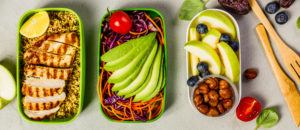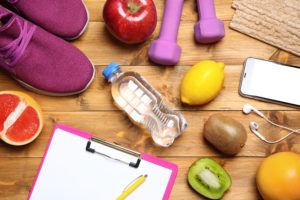By Iris Farrou
07 Sep, 2022
Diet & Exercise, Health Conditions and Pregnancy, Heart health, Lifestyle Tips, Mental Health, Parenting, Postpartum, Pregnancy, Prevention, Queer Health, Reproductive health, Women's Health
Body Changes in Pregnancy, body positive, Body Positivity During Pregnancy, Body Positivity While Pregnant, Eating Disorders and Pregnancy, Healthy Lifestyle, Healthy weight gain pregancy, How much weight should I gain in pregnancy, How to manage weight during pregnancy, how to prepare body for pregnancy, Weight Gain Support
If you have armed yourself with all the knowledge you can gather regarding the possible changes
on your body during pregnancy, then you are one step closer to dealing with the physical effect
of those changes. Some women, though they do know their body will change during pregnancy
and possibly afterwards as well, do not seem to mind it at all. Great! According to a survey of
more than 1500 women, just over 41% said they felt more negative about their bodies after
pregnancy. Which goes to show: the majority of women are struggling with body image while
pregnant. Not to mention what the body image stress is probably not helping the baby…

Is this only related to pregnancy?
Of course not… women in general are held to unrealistic expectations of beauty standards—expectations that the media and society constantly repeat. In recent years, this pressure for body perfection has worsened with the rise of social media. What is worse in pregnancy, however, is that the changes are relatively rapid, weight gain is almost always expected, feelings are exacerbated, and you may even be feeling alien in your own body. A vessel, so to speak. All of these are true: you will most likely gain weight during your pregnancy, it’s possible to develop stretch marks, and it is also a possibility that your post-partum body will not be 100% the same as your pre-pregnancy body.
This is a lot…
Yes, this can absolutely be overwhelming. Despair not! Weight gain is—and we cannot stress this enough—normal, and healthy for your baby. Also, if your doctor or nurse gives you the green light, you can exercise while pregnant. It may be light exercise, such as swimming or walking, or pre-natal yoga. These options help make you more aware of the connection between your body and your mind, perhaps take some of the edge off and your mind off of your worries and are steps to ensure the overall health of your body.
If you are concerned about weight gain during pregnancy, make a plan with your doctor, nurse, or mid wife, about your diet. Allow yourself the small pleasures without guilt: your body is participating in the miracle of nourishing a new life. There is no way to make this happen in a healthy manner unless you experience changes yourself.
What else can I do?
Honestly, don’t bottle up your feelings. Being insecure about, or even disappointed with, your
body image is completely normal. Share those feelings and thoughts with your partner, talk about
those worries with your friends. You may want to join a mom group, or even an online
discussion forum where you can exchange ideas with others on the same boat. If it gets too
much, you can always talk to a medical professional or a therapist. Even if you didn’t have body
image issues before pregnancy, it is not uncommon that future mothers start facing those worries
for the first time when they become pregnant. You are not alone in this!
More
 Living in a world that is becoming increasingly busy and fast-paced necessitates that we remain active, or even hyperactive, for long amounts of time. Just because that has become the standard, however, does not mean we should accept exhaustion and low energy levels—especially if we feel this way the majority of the time—as the standard. It is understandable that women may face even more responsibilities in their daily lives, trying to balance their work life and families, personal life, and friendships, as well as the duties of motherhood. But constant exhaustion experienced by someone who is generally healthy, and lives a generally healthy lifestyle, is a cause for concern.
Living in a world that is becoming increasingly busy and fast-paced necessitates that we remain active, or even hyperactive, for long amounts of time. Just because that has become the standard, however, does not mean we should accept exhaustion and low energy levels—especially if we feel this way the majority of the time—as the standard. It is understandable that women may face even more responsibilities in their daily lives, trying to balance their work life and families, personal life, and friendships, as well as the duties of motherhood. But constant exhaustion experienced by someone who is generally healthy, and lives a generally healthy lifestyle, is a cause for concern.
Here are some of the possible factors that may be contributing to constant fatigue and low energy:
Poor Quality Sleep: even if our busy lifestyle keeps us on our toes, adults actually need seven to eight hours of sleep a night, but that is rarely the case. However, establishing a sleep schedule that revolves around going to bed at the same time and waking up at the same time every day can be very beneficial to prevent exhaustion. It is important to sleep in a cool, dark, place with limited distractions and preferably no electronics.
Sleep Apnea: pretty close to the poor quality of sleep many adults experience is the phenomenon of sleep apnea. This is a condition that can make quality sleep almost impossible, characterized by snoring and interrupted breathing. Even if you end up sleeping through the night, it’s likely you’ll still be drowsy during the daytime, which leads to exhaustion.
Thyroid Problems: they most commonly affect women, especially middle-aged women. In addition to affecting your heart rate and metabolism, a hyperactive thyroid can cause you to feel burnt out. On the other hand, an underperforming thyroid can make you feel sluggish. If you are suspecting this is the cause of your exhaustion, discuss thyroid replacement hormone options with your doctor.
Iron Deficiency: this is a pretty common condition among women, as menstruation, pregnancy, and menopause cause female bodies to need more iron. Actually, few women get the amount of iron they actually need many times leading to anemia. Anemia’s most common symptoms are fatigue and weakness.
Before you venture into medical explorations, it is also advised that you consider lifestyle factors that may be affecting your energy levels. For example, excess physical activity can cause you to feel exhausted, and a sedentary lifestyle may cause you to feel weak and fatigued. Alcohol or drug use, as well as medications like antihistamines or cough syrup, can also lead to feeling tired. Unhealthy eating habits or an unbalanced diet are likely to contribute to general exhaustion.
More
By Iris Farrou
09 Sep, 2021
Diet & Exercise
Best gyns in Buffalo, Best OB practices in Buffalo, Best OBGYN Groups in Buffalo, Buffalo OB-GYN, Buffalo OBGYN, Chouchani MD, WNY OB-GYN, WNY Ob-gyn doctors, WNY OBGYN, women's health, women's health tips
 Food allergies affect over 200 million people worldwide, but food sensitivities affect a much higher number, making both a public health concern. Once women reach the age bracket of 13 to 21, they are significantly prone to and diagnosed with food sensitivities. As we continue to age, our immune and digestive systems don’t function as well as in our youth. Other internal, external, and environmental factors like stress, psychological factors, IBS, sensitivity to food additives and more may have something to do with food-related sensitivities.
Food allergies affect over 200 million people worldwide, but food sensitivities affect a much higher number, making both a public health concern. Once women reach the age bracket of 13 to 21, they are significantly prone to and diagnosed with food sensitivities. As we continue to age, our immune and digestive systems don’t function as well as in our youth. Other internal, external, and environmental factors like stress, psychological factors, IBS, sensitivity to food additives and more may have something to do with food-related sensitivities.
Difference of Allergies and Sensitivities
To differentiate, food allergies typically are symptomatically like anaphylaxis, cause skin rashes, and in some cases can be life threatening. Food sensitivities, however, are comparatively less serious and limited to digestive issues.
How to Address Them: Understanding Them
While we can’t control our bodies in every way as we age, here are some precautions we can take and common issues that will help us recognize an issue when it begins.
- Lack of Enzymes: the enzymes needed to fully digest food begin to decrease as we grow older. For example, lactose intolerance is due to a decrease in lactase, a digestive enzyme that breaks down lactose. Lactase production naturally decreases as we age, so what you can do to supplement that is consistently consuming dairy products to prevent deficiency.
- Additives/Food Dyes: sensitivity to food additives can worsen as we age. Food dyes and colorings, antioxidants, flavorings, and preservatives are the most common instigators. The FDA allows more additives than other countries and, as we are more and more exposed to them, reactions can happen with age. Skin reactions, gastrointestinal issues and respiratory symptoms are the most common physical responses. It’s always best to read food labels carefully and keep a food diary if new symptoms arise.
- Stress: Many sensitivities that arise in women aged 28 and older are stress-related. There are different personal ways each one of us uses to relax, and therapy is always a helpful resource if you find your stress levels are not reducing.
- Premenstrual Syndrome: A small study found a connection between lactose intolerance and premenstrual syndrome (PMS), as well as mental depression especially in females. Their prevalent theory is that high concentrations of lactose interfere with tryptophan and serotonin metabolism, which are crucial for mood control.
While we can’t control everything that goes on around and in our bodies, we can be aware of what helps, what signals a developing issue, and the preventative methods we can take as we grow older and wiser. Always consult your doctor if you have any questions, unexplained symptoms, or concerns.
More

The vast amount of online resources on healthy eating and living can be overwhelming. On average, women need between 1,600 and 2,400 calories per day. However, there is so much more involved than simply targeting a number. Healthy eating involves some basic principles for food selection.
- Whole foods: Choose whole ingredients over pre-made food, as processed foods contain added sugars. This means, opt for proteins, fruits, and veggies that are in their natural state. For example choose an apple over applesauce or apple juice. Consider adding honey and nuts to plain oatmeal instead of pre-packaged honey nut oatmeal. Remember, every choice adds up.
- Lean protein: Chicken, turkey, fish, eggs, beans, and tofu are great sources of protein with low calories. Avoid fattier meats such beef and bacon.
- Whole grains: Whenever possible choose brown rice over white rice and wheat bread over white bread. While white bread and rice may taste smoother, they lost many nutrients during the refining process.
In theory, this all sounds super easy. Of course, everyone knows chicken is healthier than beef, and we should all eat our veggies! However, so many people rely on packaged foods for convenience. Many women have families to also think about, so fast and convenient is important. Thus, we’ve put together a roundup of the best online resources to help you get started.
Meal prep: While it may sound like a ton of work, meal prepping doesn’t need to be an all-day affair. Check out 25 Healthy Meal Preps and Skinnytaste for numerous recipes to get started on meal prepping. Remember, even meal prepping just one meal per day (yogurt parfaits or overnight oats for breakfast, or hearty soup for lunch) will save you time and calories.
Time-saving dinners: Yes, it’s so very tempting to pick up Panera, Chipotle, or even Buffalo’s favorite, Mighty Taco, on your way home. It’s quick and your entire family will eat it. Eating out once a week isn’t too bad, but anymore than once and the calories will add up. Consider quick and healthy weeknight meals by opting for pre-cut proteins such as ground turkey and chicken breast tenderloins. Additionally, Buffalo-area grocery stores, such as Wegman’s and Dash’s, offer many options for pre-cut fruit and veggies. For fast dinner ideas, check out Cooking Light, Taste of Home, and Olive.
Helpful Apps: Even with making some changes in your diet with a focus on whole foods, lean protein, and whole grains, it may still be hard to find your ideal body weight. There are so many online resources and phone apps, but our favorites are MyFitnessPal and iTrackbites (similar to the Weight Watchers concept). Both are free (though you can update for a reasonable fee for a premium) and are easy to use. In addition, you can download the app to have quick access to log food on your phone.
More
 With the increased consumption of processed foods, we lose many of the nutrients necessary for our overall health. A large number of women turn to dietary supplements and multivitamins to make up for what they are not getting via their diet. The effort required for a healthy and balanced diet is sometimes too much to be accommodated through the rapid tempo of daily life, so even though women could get a lot of the necessary nutrients through food this is not always realistic. Vitamins, multivitamins and mineral supplements, are especially helpful for the following categories:
With the increased consumption of processed foods, we lose many of the nutrients necessary for our overall health. A large number of women turn to dietary supplements and multivitamins to make up for what they are not getting via their diet. The effort required for a healthy and balanced diet is sometimes too much to be accommodated through the rapid tempo of daily life, so even though women could get a lot of the necessary nutrients through food this is not always realistic. Vitamins, multivitamins and mineral supplements, are especially helpful for the following categories:
- Women who are or may become pregnant: to lower the risk of birth defects, pregnant women should have a daily intake of at least 400 micrograms of folic acid.
- Postmenopausal women: due to hormonal changes after menopause, women tend to lose bone density at a faster rate—especially when compared to men. Calcium and vitamin D are optimal to prevent osteoporosis, and they are not adequately provided through nutrition. A supplement that includes those, along with B-12 and weight exercises will help prevent osteoporosis and any associated health problems.
- Vegetarians: the consumption of plant products and vegetables may mean that women who follow a vegetarian diet are more in need of vitamins generally found in animal products. Most commonly, vitamins B-12 and B-2, as well as vitamin D lack in vegetarian, and especially vegan, diets.
Though it is easy to turn to dietary supplements and minerals to make up for the low levels of these vitamins in food, it is not impossible to make dietary choices that provide you with the necessary nutrients. These are some of the foods that contain important vitamins and minerals for your health, though you should always listen to your body and consult your health care provider if you make major dietary changes or are experiencing health challenges:
- Vitamin B9 (folic acid): spinach and other dark green leafy vegetables, oranges, pure orange juice, nuts, beans, chicken, lean beef, whole grains, and cereals with added folic acid
- Vitamin B-12: low-fat or fat-free milk, eggs, liver, poultry, clams, sardines, flounder, herring, blue cheese, and nutritional yeast. It may also be found in food that have B-12 added, such as cereal, fortified soy beverages, and veggie burgers.
- Vitamin D: tuna, salmon, and fortified foods
- Calcium: low-fat or fat-free yogurt, cheese, and milk. Dark green leafy vegetables and canned salmon make good sources of calcium as well. It’s found in calcium-added foods such as select soy beverages, 100% orange juice, tofu, and cereals.
- Iron: lean red meats and chicken, seafood, cereals/breads with added iron, oysters, beans, dark chocolate, liver, spinach, tofu, and canned tomatoes.
More
 Exercise is the best way to help your body cope with the physical changes during pregnancy. Even if you did not exercise before you were pregnant, it’s a great time to start. Experts recommend 30 minutes of moderate-intensity exercise at least five days a week. This recommendation is actually the same for all adult women. However, exercise during pregnancy is especially important because it can reduce back pain and ease constipation, bloating, and swelling. Regular exercise also boosts your mood and energy, while helping you sleep better. If that’s not enough, it will also help your body prepare for labor and ward off excess baby weight.
Exercise is the best way to help your body cope with the physical changes during pregnancy. Even if you did not exercise before you were pregnant, it’s a great time to start. Experts recommend 30 minutes of moderate-intensity exercise at least five days a week. This recommendation is actually the same for all adult women. However, exercise during pregnancy is especially important because it can reduce back pain and ease constipation, bloating, and swelling. Regular exercise also boosts your mood and energy, while helping you sleep better. If that’s not enough, it will also help your body prepare for labor and ward off excess baby weight.
First Trimester
- Walking is the easiest way to get active. You can get started right away—all you need is a decent pair of sneakers. A moderate pace of about 1 mile every 20 minutes will raise your heart rate, without putting too much strain on muscles and joints.
- Yoga is another exercise that needs minimal equipment—all you need is comfortable clothes and a gym mat. Through a combination of stretching, aerobic-type exercises, and deep breathing, yoga will tone your body, while also resetting your mind and reducing overall stress.
- Water aerobics requires a pool or gym membership, but it’s a great way to get active because it’s low impact. Swimming classes are especially gentle on joints, legs, and ankles.
- Jogging and running are goods way to get your blood pumping, but they should be reserved for experienced athletes. Pregnancy is not a good time to start running for the first time.
- Strength training helps build muscles in your arms to prepare for carrying the baby around. When pregnant it’s advised to avoid excessive weight and exercises where you are lying on your back.
- Low-Impact Aerobics are still okay in your first trimester, but can be more straining than other options. If you are already active with aerobics, it’s safe to keep it up as long as you are being careful. It’s always best to choose aerobics classes or videos geared toward pregnant women.
Second Trimester
While you may need to adjust your habits based on your changing body, there is no reason to cut back on exercising during your second trimester. In fact, it’s highly recommended to continue getting 30 minutes of moderate exercise each day.
Even more so than the first trimester, choose low impact exercises such as walking, yoga, and swimming. Yoga is still a great exercise to help reduce stress, calm your mind, and strengthen your body. However, in the second trimester, it’s best to avoid yoga poses where you are lying on your back for more than a moment or two because the weight of your enlarging uterus could compress major blood vessels and restrict circulation to you and your baby. Motionless standing, like tree pose, should be avoided as it can restrict blood flow.
Third Trimester
For the final trimester, you should focus solely on low-impact, easy exercises. Keep up your routines and continue doing what has felt good during your pregnancy so far. Walking, yoga, and water aerobics are great exercises for your third trimester.
Intense strength training such as ab workouts, push-ups and planks should be avoided. It’s also best to avoid exercises where your balance is challenged by using only one leg at a time.
Takeaway
Before you begin any exercise regimen while pregnant, talk to your OBGYN. They can help you build an ideal fitness plan based on your current fitness levels, and any possible unique risk factors.
More
Many women look into bettering their overall health when they plan a pregnancy, but good habits should start with a healthy conception. In addition to regular doctor’s exams and other medical advice, diet and exercise can help with conception and help support a healthy pregnancy.
Exercise
Although heavy or extreme exercise should be avoided during pregnancy, there is nothing to prevent you from preparing your body for a healthy pregnancy. Implementing regular exercise into your schedule will not only help you increase your stamina for labor and delivery, but it can also improve your fertility (especially if have polycystic ovarian syndrome that can lead to trouble conceiving). There is no need to wait until you are pregnant to start exercising, as making it a habit is guaranteed to also help you lose the baby weight faster!
A variety of physical exercises can be done to spice up your routine but remember that during a pregnancy you need your back and abdominal muscles to be stronger in order to help you with the increasing weight in your tummy area, as well as the swelling of your breasts. As such, you may want to focus on exercises that strengthen your core and will eliminate the pain most women experience during pregnancy. It is also suggested that you do cardio to keep your heart rate up and stay in good physical and mental health before, during, and after your pregnancy.
Diet
Diet and exercise go hand in hand, so here are some tips on what foods you can add to your diet to help you support your fertility:
- Eat foods rich in antioxidants, as those have been proven to improve fertility in both men and women. These foods include fruits, vegetables, nuts, and grains.
- Choose a bigger breakfast, which can help both balance your diet and improve the hormonal effects of polycystic ovarian syndrome—a major cause of infertility.
- Add fiber to your diet though fruits and veggies, whole grains, and beans. Fiber generally helps remove excess estrogen, though studies on its exact advantages are not yet conclusive.
- Get your protein from vegetables! Swapping meat protein with veggies has been known to protect against infertility.
In addition to adding those foods, you should avoid the following:
- Minimize trans fats that can be found in processed and fast foods.
- Cut down on caffeine, especially if you drink more than 500 ml in a day. Low to moderate caffeine consumption should not interfere with fertility.
- Reduce refined carbs: sugary foods and drinks, as well as processed grains increase your blood sugar and insulin levels and have been associated with the risk of ovulatory infertility.
- Avoid alcohol, especially during the pregnancy! When you are still trying to get pregnant, moderate amounts of alcohol should not harm your fertility, but excess is to be avoided.
More

With the roaring 2020s just around the corner, it’s time to think about facing the new year with less stress. Most likely, some of your new year’s resolutions include taking better care of your body and maintaining your well-being. A lot of people manage stress, anxiety, and day-to-day challenges through exercise, and yoga is one form of exercise that gains more and more popularity—especially since it can be done either in a studio or at home, with company or individually.
Yoga can help with a variety of health issues, and different yoga poses are known to help heal different pains, whether those are physical or emotional.
Stress Relief
Like many forms of exercise, yoga can help ease day-to-day stress and contribute to a more relaxed state of being. It helps us bring our attention back to our bodies and focuses the mind and breath on what parts of it are experiencing tension and pain.
- Forward fold/bend: A forward fold essentially looks like bending over to touch your toes. This pose helps the body release tension so that you are better prepared to relax. It also allows the upper back to stretch and release tightness in the neck and shoulders.
- Standing forward fold with shoulder opener: This pose looks the same as a forward fold, but also incorporates your arms stretched behind you in an upward pull. In addition to increasing exhalation, shoulder openers help the body concentrate on the pose and reduce stressful thoughts. This pose helps release shoulder tension and relax the hamstrings.
- Side stretch: A relatively easy pose, a side stretch can be done on both sides of the body, helping to release the neck, head, and shoulders muscle tension.
Balancing Emotions
Just as it helps relieve stress, yoga can help us process our emotions and let go of emotional tensions we have been holding in our bodies.
- Tree pose: With a firm stance on the ground, this pose is accomplished by lifting and placing your foot either on your inner thigh or calf (being careful to avoid the knee area). Intended to stretch your upper body, while you raise your hands above your head and breathe into your heart space. The purpose is to ground yourself and embody the stability that comes with situating your roots into the earth.
- Warrior II: With the tree pose having brought attention to your heart space, the warrior II helps you realize the extent of your inner power that comes from your heart space. Drawing 20 to 25 breaths in this pose, you can focus on drawing strength and confidence into yourself.
Dealing with Pain
A combination of gentle yoga poses with conscious breathing techniques can help augment relaxation response, especially if used in restorative yoga which is meant to help heal deeper pain and allow the body to experience a pose for a longer period of time.
- Nesting pose: To find this pose, lay on your side, legs bent and drawn in toward your belly. This pose is recommended if you have trouble sleeping or are suffering from insomnia, as it creates a sense of security and nurturing. Focus on the natural rhythm of your breath, observing how the breaths move in and out of your body, creating a secure pattern.
- Supported backbend pose: This heart-opening pose is done by laying on your back with your legs bent. The key is to put a bolster under your upper back to releases chronic tension in the back and shoulders, working to undo the stress placed on our bodies from working at a desk, a computer, or driving. It improves the flow of the breath from the upper chest to the heart and rib cage, down to the belly.
- Seated forward fold: Done in a seating position, it’s best to use a bolster to let your upper body meltdown as you reach for your feet. According to the information given by QC Kinetix (Bradenton), our daily activities place a lot of stress and pain on the spine, not only on the shoulders and neck. This pose helps relax the hips and the back allowing it, as well as your chest and belly, to expand and contract with each breath you take.
While this list is far from exhaustive, it’s meant to provide a basic understanding of the benefits of yoga. The best way to get involved is to seek out a local class or begin practices the fundamentals of yoga (basic poses, like the ones above) through videos online.
More
 With the holidays right around the corner, it can be difficult to stay healthy and stick to fitness goals. The right mindset and practicing smart habits can make all the difference. It is indeed possible to survive the holiday season without your clothes getting too tight!
With the holidays right around the corner, it can be difficult to stay healthy and stick to fitness goals. The right mindset and practicing smart habits can make all the difference. It is indeed possible to survive the holiday season without your clothes getting too tight!
Establish Realistic Expectations: First of all, it is important to set attainable goals for yourself and to be honest about your expectations. It is perfectly normal to want to enjoy the sweet and savory treats that proliferate around holiday time. Think about how to achieve an appropriate healthy balance during this time. If weight loss is your goal, perhaps this is not the time to lose a significant amount of weight. Understanding that ahead of time will prevent you from feeling like a failure.
Indulge on Individual Occasions, not a Season: Avoid the “all-or-nothing” mindset that you are either 100% sticking to your healthy plan or “cheating” for the whole season. Allow yourself to indulge on certain days and keep to a routine on the other days. If you host a party, send leftovers home with your guests or bring them to work. Leaving treats in the house may cause these occasional indulgences to become staples.
Prepare Ahead of Time: With so many temptations at holiday parties, grocery stores, and even the breakroom at the office, it’s important to plan ahead. When preparing to run errands or go grocery shopping, eat a filling snack such as an apple or nuts to stave off hunger. This can also come in handy while baking, which can help control the temptation to graze on sweet ingredients. Having a snack or a small meal before holiday parties can help to avoid overeating.
Enjoy Smartly with Portion Control: Avoiding all of your favorite treats at holiday time will make you feel deprived and could lead to overeating. Choose some of your favorites and enjoy them in moderation. Try the “one plate” rule. Allow yourself one small plate of appetizers, one full plate of food for your main meal, and one dessert. Since alcohol is calorie dense and also lowers inhibitions, choose one drink to enjoy. Wine, wine spritzers, and light beer are better choices than mixed drinks with soda or fruit juice or sugary drinks like pina coladas and margaritas.
Work in Movement Creatively: It may be difficult to stick to your normal workout routine, so find other ways to incorporate extra movement. When holiday shopping, running errands, or even at work, park your car in the furthest part of the parking lot to get in some extra steps. Take the stairs instead of the elevator. Squeeze in activity any way that you can, such as taking walk breaks or doing exercises such as squats or jumping jacks.
Set Boundaries and Take Time for Yourself: The holidays can be a very stressful and busy time. Do not let your own needs become lost in the holiday haze. Take time to yourself every day, whether it is reading a book, listening to soothing music, taking a bath, etc. Don’t be afraid to say no to extra projects, activities, or requests for your time, energy, and attention. Create and stick to a budget, schedule, and eating plan that allow you to enjoy the holidays, while maintaining your sanity and health.
More
 Most office jobs require you to spend an average of eight hours a day working at a desk or being relatively immobile. With the exception of lunch time, maybe you don’t even realize how long you’ve been sitting down until it’s time to clock out and commute back home. Being seated for long hours at a time and facing the stress of the workplace is less than ideal, but you have options to integrate healthy habits into your workday.
Most office jobs require you to spend an average of eight hours a day working at a desk or being relatively immobile. With the exception of lunch time, maybe you don’t even realize how long you’ve been sitting down until it’s time to clock out and commute back home. Being seated for long hours at a time and facing the stress of the workplace is less than ideal, but you have options to integrate healthy habits into your workday.
Here are some simple habits you can incorporate into your workday to ease stress and contribute to your overall health:
- Taking short breaks: Though it is easy to stay in the zone when working—and it actually feels productive—it is important to take short breaks throughout the day. They help you take your attention away from your computer screen and recharge your brain. Your concentration becomes better, and you are forced to change your posture just by getting up, stretching and walking around for a few minutes. Experts suggest taking a five-minute break every hour.
- Drink water: While it might seem obvious that we should be drinking water, hydration is also an easy way to energize you during a long day at work, and effectively provide you with much-needed hydration that can help you focus better.
- Eat healthy: In addition to saving money, bringing your own lunch to work means you have the choice to eat something healthy, as well as something different every day. You should make nutritious food choices and avoid the easy way out—ordering in or take-out. Opt for whole grains and lean proteins with a side of fruit or veggies. The same applies to your breakfast: you need energy to go through the day, so choose a well-balanced breakfast that will provide you with the right nutrients until it’s time for lunch.
- Improve your posture: It is easy at most office jobs to slouch down your chair or be hunched over your desk. Such postures, however, put strain on your muscles especially if they are used for a long period of time. Be attentive to how you are sitting, invest in some good furniture that provides you with back and neck support—or get equipped with a back-support cushion, a foot rest, a foam cushion for your wrists or even a laptop riser so it is on eye level. If in doubt, ask your work if they can provide an ergonomic evaluation of your workspace to help you get in proper alignment.
- Get to work early: Even though it may seem like you are working extra time, getting to work early can actually make your day less stressful. It gives you time to start the day without jumping head-first into the work you need to do, and it provides you with the opportunity to also socialize with your co-workers. After all, you are probably in the same boat, so why not build community?
More










